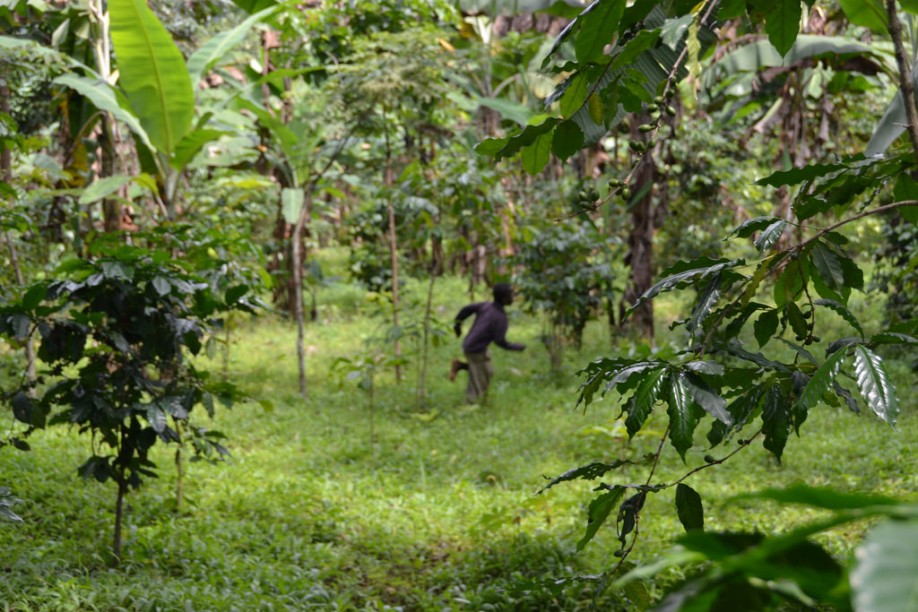Photo: Coffee and banana agroforestry in Uganda by James Anderson, World Resources Institute.
While over 120 different species of coffee trees (coffea) have been identified, the two most commonly used in the production of coffee are Arabica (Coffea arabica) and Robusta (Coffea canephora). Robusta is more resistant to disease, grown at lower altitudes, warmer temperatures, and produces higher yields; however, it generally makes coffee of lesser quality. (Hoffmann) The majority of coffee produced uses Arabica which originated in Ethiopia and is grown at higher altitudes. It gained popularity as a drink in Yemen around 1500 and has spread throughout the world since, mainly due to trade and colonization. (Topik) Coffee is grown in tropical climates between the Tropic of Capricorn and Tropic of Cancer in Africa, Asia, Central, and South America.
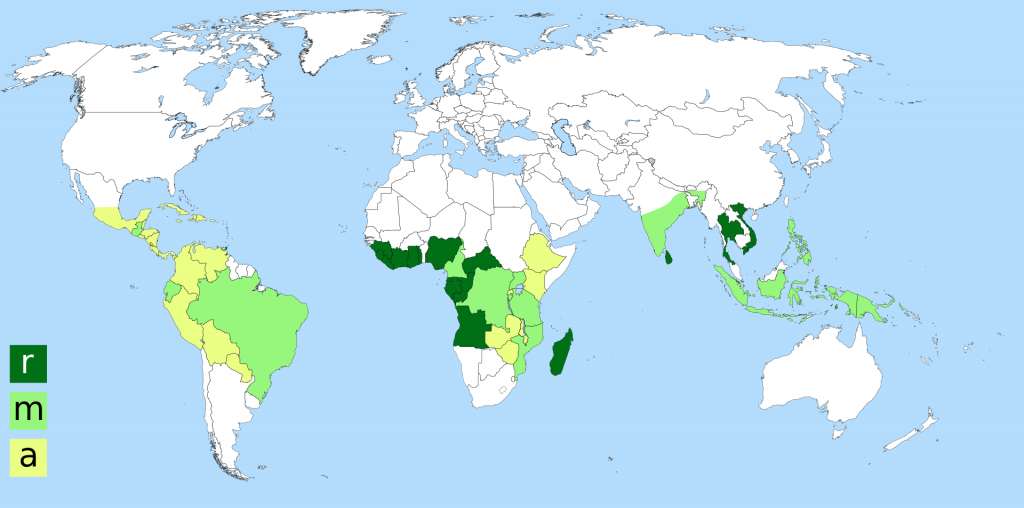
This map shows areas of coffee cultivation by type of coffee:
r: Robusta
m: Both Robusta and Arabica
a: Arabica
(Wikimedia)
Coffee trees can grow up to 8 meters high but are usually pruned to a shrub size more suitable for harvesting. (Kew) The fruit of the coffee tree is called a cherry, with two or sometimes one coffee seed, or bean growing inside. After a period of rain that allows trees to begin flowering, most trees then take up to 9 months for these cherries to ripen. Different varieties of Arabica include Bourbon, Pacamara, Typica, and SL-28 and the colors of ripe cherries can range from yellow to dark red-purple depending on the variety. (Hoffman)
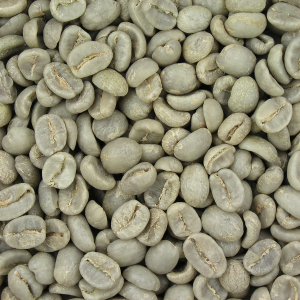
Green Coffee – The beans that have been processed and are ready to be roasted. by Dan Bollinger
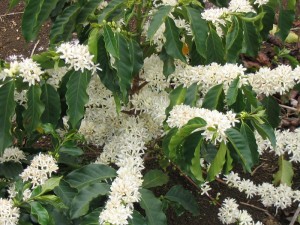
Coffee Flowers in Plantation of Brazil by Marcelo Corrêa
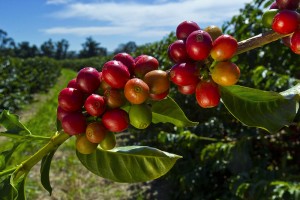
Ripe coffee berries of the mundo novo variety ready for harvesting. by Jonathan Wilkins
Coffee does well when grown as traditional in shade, well draining and nutrient rich soils (usually volcanic), and at altitudes of 950–2000+ m. Climate change and other effects such as diseases and pests -coffee leaf rust and the coffee cherry borer- threaten coffee production and quality. (Kew) Most trees are grown on small farms rather than large estates and there is increased effort in agroforestry, biodynamic farming, and farmer education to help produce healthier trees.

